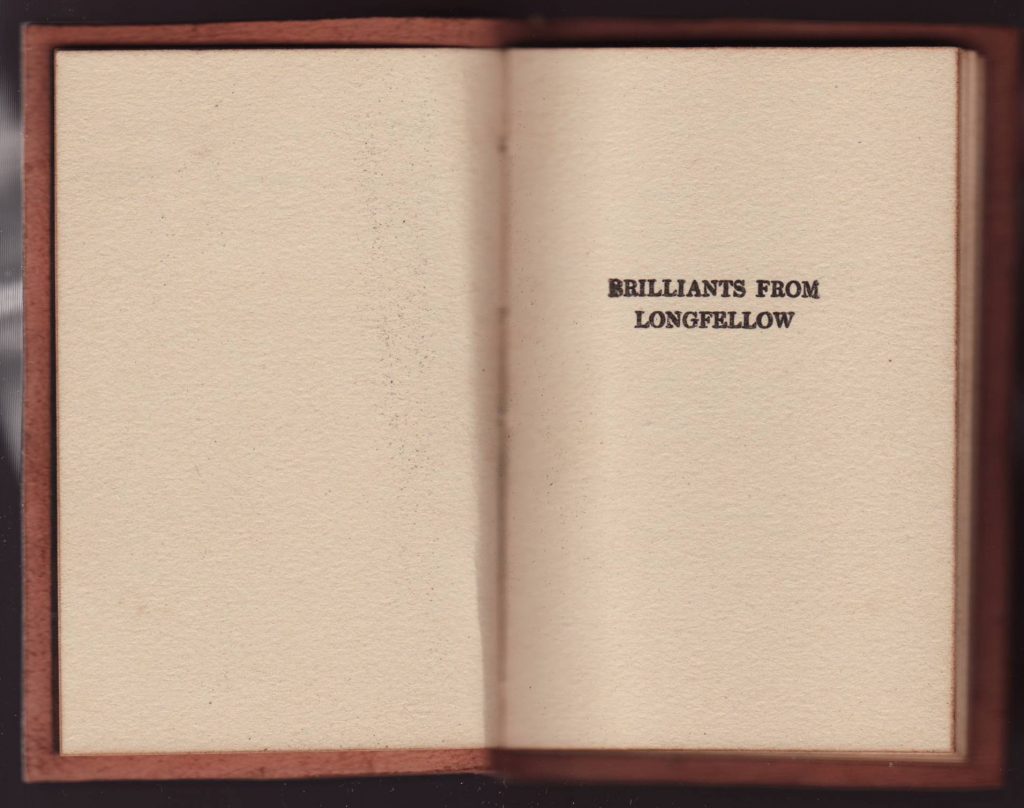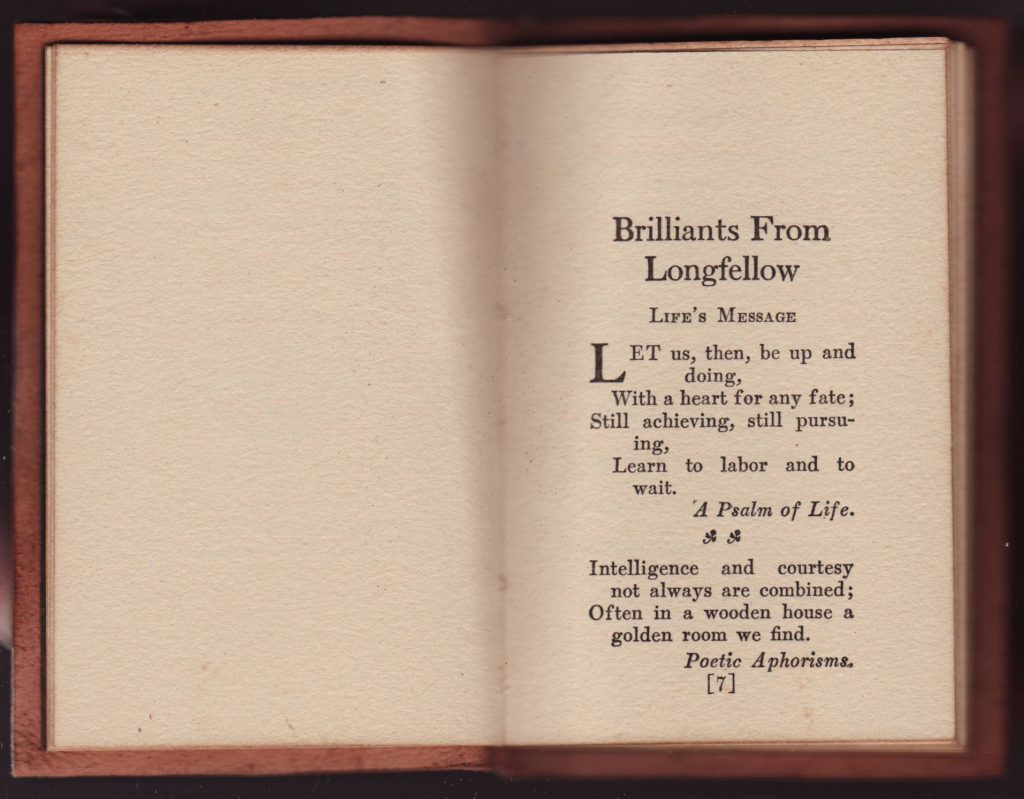Barse & Hopkins (New York & Newark, NJ, US)
Series dates: 1925-1932
Size: 3.25″ x 5″
Barse & Hopkins was founded in 1909 when William J. Barse (of the publisher Brewer, Barse and Co., Chicago) partnered with John H. Hopkins and began publishing in New York City. Around 1925 the firm moved to Newark, New Jersey. Given the lack of dates in many Barse & Hopkins reprints, the inclusion of Newark on the book’s title page can at least place the date of publication to after 1925. In 1928 Hopkins left the firm to become a literary agent. The firm continued (as John H. Hopkins & Son) until bankruptcy in 1932 when Grosset & Dunlap acquired the firm and its stock. Grosset & Dunlap continued to publish books with the imprint until at least 1937.
Barse & Hopkins most famous author was British-Canadian bank clerk turned “bard of the Yukon” Robert Service. Barse & Hopkins was the US publisher of Service’s books, from 1909 through 1926. Barse & Hopkins was, however, primarily focused on reprint series, many aimed at the gift market. A 1918 catalog (here) lists over 20 series (with at least as many children’s series). Series titles are almost exclusively out-of-copyright classics, consisting of mostly selections or anthologies, that vary only in binding or printing from series to series:
Aberdeen Series (short classics, new plates)
Ardsley Series (vellum bound, boxed)
Bancroft Series (vellum bound, boxed)
Biltmore Series (vellum, tied with silk ribbon)
Birthday Books (selections from classics)
Blackstone Series (new plates, Persian Ooze)
Christmas Classics (selections from classics)
Claremont Series (“Unbreakable Back” binding)
Day-to-Day Series (thoughts for every day of the year)
Elberon Series (leather, deluxe-edition)
Finesse Classics (selections from classics)
Gems of Thought Series (anthologies)
The Golden Books (vellum bound, boxed)
Greylock Series (bound in Persian Ooze)
Hargrave Series (Duratex)
Knickerbocker Series (full color)
Relyea Classics (embossed leather)
Rockingham Series (bound in embossed Duratex [also used for car upholstery)
Savoy Series (bound in Persian Ooze)
Shelburne Series (selections from standard authors)

Barse & Hopkins’ Pocket Classics series came later in the firm’s years of operation, probably after 1925 (when the firm moved to Newark). The series does not show up in any of the typical contemporary periodicals that included information about books and publishers. One mention of the Pocket Classics series (price .60 cents) can be found in Books in Print January 1, 1928. None of the Barse & Hopkins advertisements in Publishers Weekly (through 1921) mention the series. The series is also missing from WorldCat, which is not that unusual, in part because most libraries did not acquire gift books (even if they were classics). Also, the only place the series is mentioned in the book is on the label on the edge of the box that holds the book (and this box was almost always discarded). A gift inscription in the book is dated 1928, which is probably about the time it was printed.
The title below, Brilliants from Longfellow, is a relatively brief anthology that itself seems to have been recycled through several publishers and series. It first appears as a gift book from the Hayes Lithographing Co. around 1910 then available in the Barse & Hopkins Brilliant Series and Christmas Classics series in the Retail Catalogue of Standard and Holiday Books, McClurg, Booksellers, Chicago, 1913. It seems that Barse & Hopkins acquired the plates from the book from Hayes around 1911 or 1912. The title appears in the Christmas Classics series at least once in the early 1920s. The version below, in the Pocket Classics series, was, as noted above, was printed in 1928 having been previously published by two publishers and in two previous series at Barse & Hopkins.
The book, like many from Barse & Hopkins, came in a small book with a textured paper cover. What looks like water stains in the scan below is actually a slightly iridescent paper cover that looks better in person. A label on the side of the box identifies the publisher and series name, the only place the series name is mentioned (it is nowhere to be found in the book).
The binding is a soft suede-like material with the title printed in gold on the cover but no other printing or decorations.
Endpapers are bronze colored linen paper.
The half-title page:

The title page includes the title, a quote from the Golden Legend, Barse & Hopkins logo and the imprint (with New York and Newark locations).
There is no copyright nor printing information in the book.




